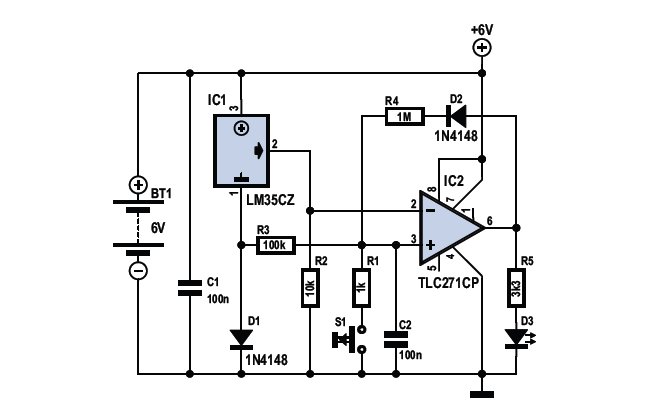
300HZ - 3KHZ Audio Filter
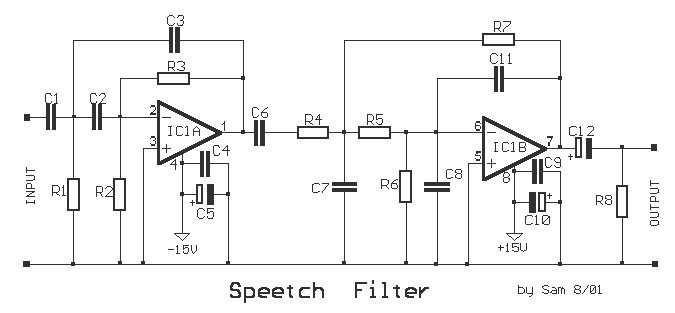
The human speech apprehends a small area of frequencies, that is extended from 300Hz until 3kHz. This spectrum is also internationally recognized for the transmission of speech via telecommunications networks. This is also the main use of this circuit, which can be utilized in applications that require this specific spectrum of frequencies, rejecting the spectrum above and below, making speech comprehensible. The circuit is constituted by two active units, second-order filters (calculated for critical damping). The first filter, utilizing IC1A, rejects the low frequencies (under 300Hz) [high pass], and the second, IC1B, rejects high frequencies (above 3kHz) [low pass], thus composing a total band-pass filter for the range (300Hz-3kHz). To ensure good performance of the filter, as with all filters, metal film resistors with a tolerance of 1% and polystyrene capacitors should be used.
The circuit described operates within the critical frequency range for human speech, employing a band-pass filter configuration that effectively isolates the desired frequencies while eliminating unwanted noise. The use of integrated circuits (ICs) such as the TL072 is crucial, as they provide high input impedance and low output noise, which are essential for preserving the integrity of the audio signal.
The filter design consists of two sections: the first section, implemented with IC1A, acts as a high-pass filter. It utilizes a resistor-capacitor (RC) network to block frequencies below 300Hz, allowing only higher frequencies to pass through. The choice of a 120kΩ resistor (R1) in conjunction with a 2.2nF capacitor (C1) establishes the cutoff frequency, ensuring effective attenuation of low-frequency noise.
The second section, implemented with IC1B, is a low-pass filter designed to cut off frequencies above 3kHz. This section features a 150kΩ resistor (R2) and a 150pF capacitor (C3), which together set the upper cutoff frequency, thus preventing high-frequency signals from interfering with the clarity of the speech signal.
The remaining resistors and capacitors in the circuit, including R3 through R8, and C4 through C12, provide additional stability and performance enhancements. For instance, the use of 1/4W, 1-2% tolerance resistors ensures that the circuit maintains its performance characteristics over a range of operating conditions.
Overall, this circuit is an effective solution for applications requiring clear speech transmission, such as in telecommunications and audio processing systems. The design emphasizes precision components and careful attention to frequency response, ensuring that the critical speech frequencies are preserved while eliminating extraneous noise.The human speech apprehend a small area of frequencies, that is extended from 300HZ until 3KHZ. This spectrum is also internationally recognized for the transmission of speech via telecommunications networks. This is also the mainer use of this circuit, one and it can be used in uses that we needed this concrete spectrum of frequencies, rejecting the spectrum on and under what, making comprehensible the speech.
The circuit is constituted by two active units, filters of second class (calculated for critical damping). The first filter round the IC1A rejects the low frequencies (under 300 HZ) [high pass] and the second IC1B high (above 3KHZ) [low pass], composing thus a total filter band pass of area (300HZ-3kHZ).
In order to has good yield the filter, as with all the filters, it should are used resistances metal film 1% and capacitors polysteryne. Part List R1= 120Kohm R7= 150Kohm C6= 100nF 100V polystyrene R2= 100Kohm R8= 47Kohm C7= 560pF R3= 470Kohm C1-2-8= 2.2nF 100V polystyrene C11= 150pF R4-7= 8.2Kohm C3= 150pF C12= 10uF 25V R5= 6.8Kohm C4-9= 100nF 100V IC1= TL072 R6= 33Kohm C5-10= 47uF 25V All resistors is 1/4W 1-2% 🔗 External reference
The circuit described operates within the critical frequency range for human speech, employing a band-pass filter configuration that effectively isolates the desired frequencies while eliminating unwanted noise. The use of integrated circuits (ICs) such as the TL072 is crucial, as they provide high input impedance and low output noise, which are essential for preserving the integrity of the audio signal.
The filter design consists of two sections: the first section, implemented with IC1A, acts as a high-pass filter. It utilizes a resistor-capacitor (RC) network to block frequencies below 300Hz, allowing only higher frequencies to pass through. The choice of a 120kΩ resistor (R1) in conjunction with a 2.2nF capacitor (C1) establishes the cutoff frequency, ensuring effective attenuation of low-frequency noise.
The second section, implemented with IC1B, is a low-pass filter designed to cut off frequencies above 3kHz. This section features a 150kΩ resistor (R2) and a 150pF capacitor (C3), which together set the upper cutoff frequency, thus preventing high-frequency signals from interfering with the clarity of the speech signal.
The remaining resistors and capacitors in the circuit, including R3 through R8, and C4 through C12, provide additional stability and performance enhancements. For instance, the use of 1/4W, 1-2% tolerance resistors ensures that the circuit maintains its performance characteristics over a range of operating conditions.
Overall, this circuit is an effective solution for applications requiring clear speech transmission, such as in telecommunications and audio processing systems. The design emphasizes precision components and careful attention to frequency response, ensuring that the critical speech frequencies are preserved while eliminating extraneous noise.The human speech apprehend a small area of frequencies, that is extended from 300HZ until 3KHZ. This spectrum is also internationally recognized for the transmission of speech via telecommunications networks. This is also the mainer use of this circuit, one and it can be used in uses that we needed this concrete spectrum of frequencies, rejecting the spectrum on and under what, making comprehensible the speech.
The circuit is constituted by two active units, filters of second class (calculated for critical damping). The first filter round the IC1A rejects the low frequencies (under 300 HZ) [high pass] and the second IC1B high (above 3KHZ) [low pass], composing thus a total filter band pass of area (300HZ-3kHZ).
In order to has good yield the filter, as with all the filters, it should are used resistances metal film 1% and capacitors polysteryne. Part List R1= 120Kohm R7= 150Kohm C6= 100nF 100V polystyrene R2= 100Kohm R8= 47Kohm C7= 560pF R3= 470Kohm C1-2-8= 2.2nF 100V polystyrene C11= 150pF R4-7= 8.2Kohm C3= 150pF C12= 10uF 25V R5= 6.8Kohm C4-9= 100nF 100V IC1= TL072 R6= 33Kohm C5-10= 47uF 25V All resistors is 1/4W 1-2% 🔗 External reference

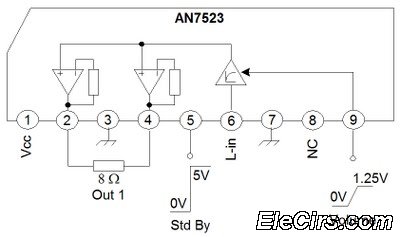
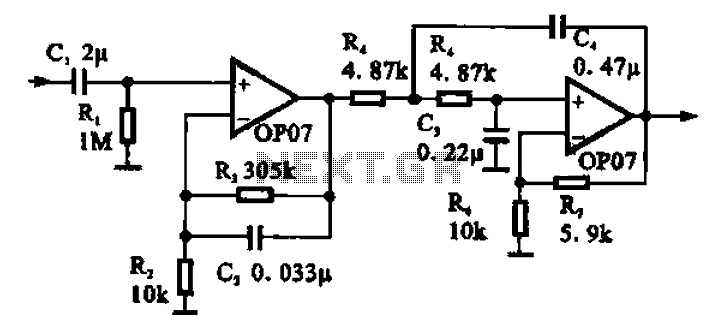
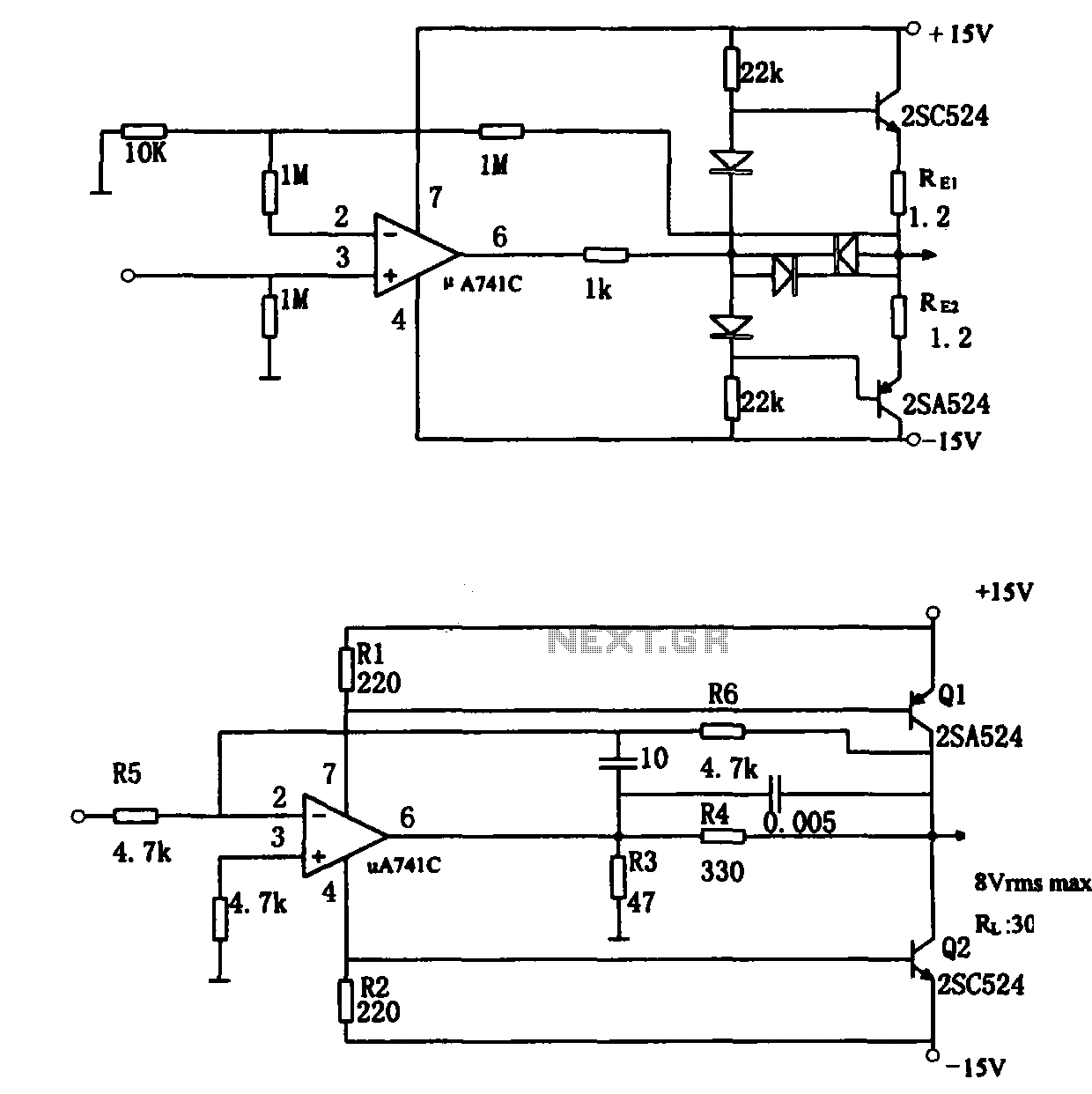
.gif)
